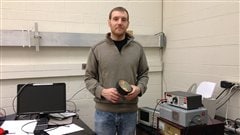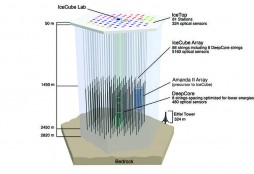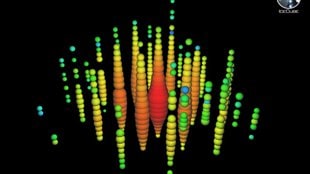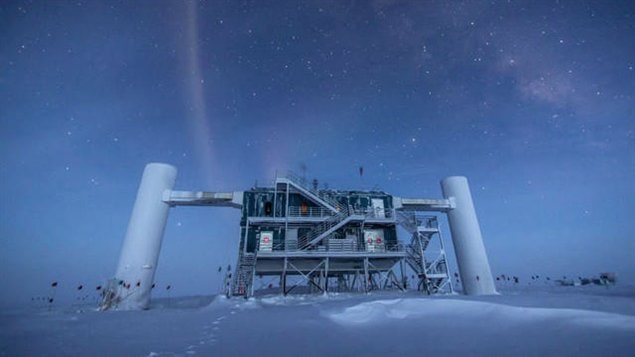An international scientific research centre in the Antarctic has just been named as Breakthrough of the Year, by the British magazine Physics World.
Canada is among the countries involved with the neutrino hunting project known as “IceCube”
Ken Clark PhD, at the University of Toronto is among the Canadians studying the data. He is an assistant professor of physics at the University of Toronto
ListenIceCube was awarded the title both for making the first observation of cosmic neutrinos, but also for overcoming the many challenges of creating and operating a colossal detector deep under the ice at the South Pole

In making the award, Hamish Johnston, editor of Physicsworld.com said “The ability to detect cosmic neutrinos is a remarkable achievement that gives astronomers a completely new way of studying the cosmos. The judges of the 2013 award were also impressed with the IceCube collaboration’s ability to build and operate a huge and extremely sensitive detector in the most remote and inhospitable place on Earth.”
The project consists of a field of 86 holes drilled 2.5 km down into the Antarctic ice sheet, into each deep hole is lowered a cable about a with several soccer ball sized “digital optical modules” (DOM) strung along its length. The DOM’s begin at the 1.5 km depth and are dispersed downward along the length to the bottom The strings of modules are set at 125 metres apart from each other and there are 5,160 DOMs in all. Thus at 1.5 km under the surface, a cubic kilometre of a detection apparatus begins.
 It might be classed as either a giant antenna or a giant telescope of sorts as it detects neutrinos passage from any direction, “observing” as it were, the entire universe.
It might be classed as either a giant antenna or a giant telescope of sorts as it detects neutrinos passage from any direction, “observing” as it were, the entire universe.
Neutrinos are nearly massless subatomic particles. Billions of them pass through every square kilometer of the earth every second, but most originate in the sun, or the earth’s atmosphere.
However, high-energy neutrinos are believed to come from the edges of our galaxy, or beyond. They are thought to hold some answers to cosmic events like black holes or supernovas, pulsars and other extreme extra-galactic phenomena.

These high-energy neutrinos might have been travelling for millions or even billions of years through the universe before reaching the earth and passing through the ice.
Water (or ice in this case) is one of the things known to interact with neutrinos. When these high energy neutrinos interact with the ice molecules by striking a nucleus, they create charged particles which give off tiny flashes of bluish light as they travel through the ice.
With dozens of these strings of sensors spread out in a precise pattern in a cubic kilometer of ice, a flash of a neutrino can be measured in intensity and trajectory.
Countries involved in IceCube include: U.S., Germany, Sweden, Belgium, Switzerland, Japan, Canada, New Zealand, Australia, U.K. and Korea.







For reasons beyond our control, and for an undetermined period of time, our comment section is now closed. However, our social networks remain open to your contributions.